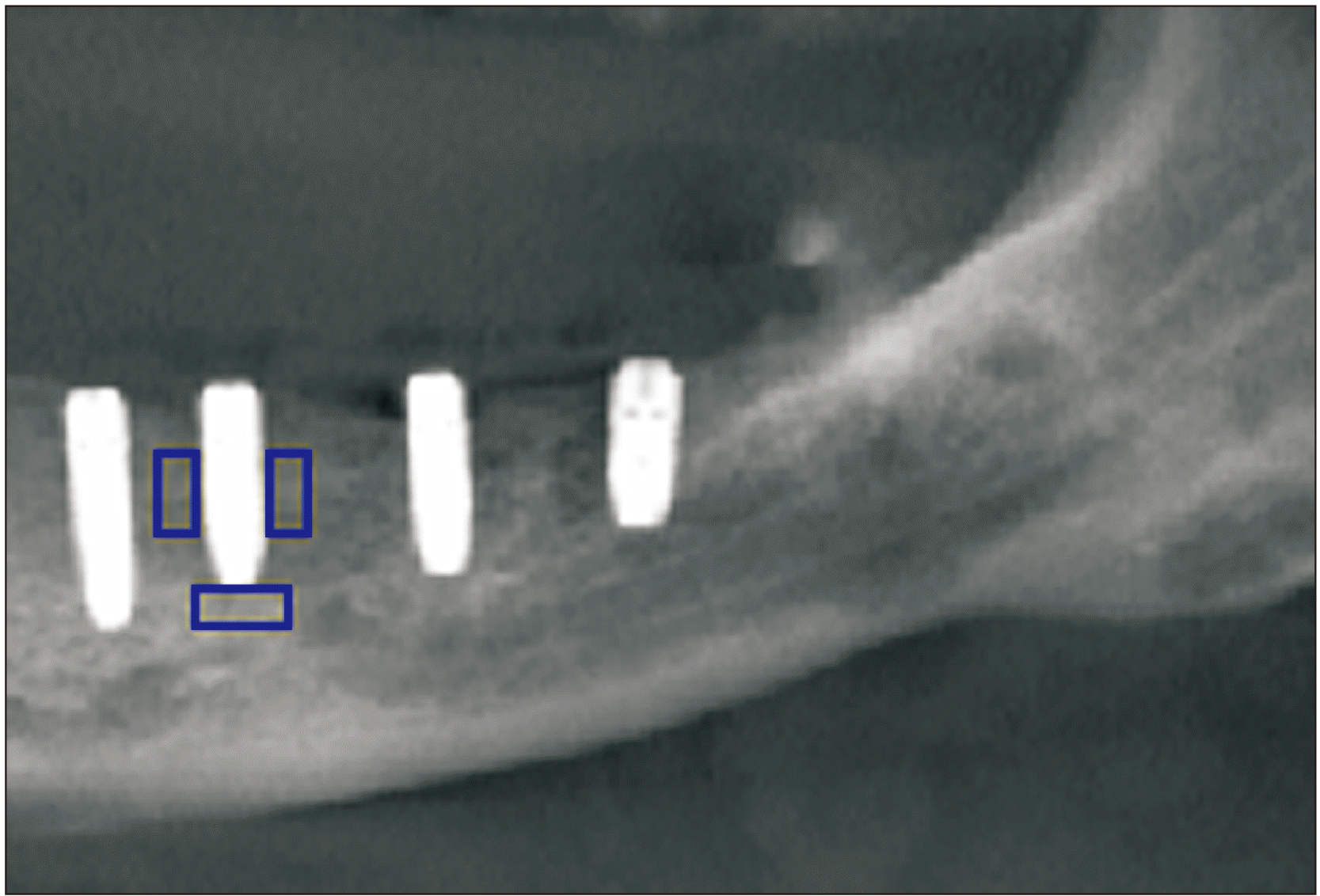5. Brunski JB, Puleo DA, Nanci A. 2000; Biomaterials and biomechanics of oral and maxillofacial implants: current status and future developments. Int J Oral Maxillofac Implants. 15:15–46. PMID:
10697938.
7. Bidez MW, Misch CE. 1992; Force transfer in implant dentistry: basic concepts and principles. J Oral Implantol. 18:264–74. PMID:
1289562.
9. Jemt T, Lekholm U. 1993; Oral implant treatment in posterior partially edentulous jaws: a 5-year follow-up report. Int J Oral Maxillofac Implants. 8:635–40. DOI:
10.1034/j.1600-0501.1994.050304.x. PMID:
7827228.
16. Bianchi AE, Dolci G Jr, Sberna MT, Sanfilippo S. 2005; Factors affecting bone response around loaded titanium dental implants: a literature review. J Appl Biomater Biomech. 3:135–40. PMID:
20799218.
17. Jung YH. 2005; Evaluation of peri-implant bone using fractal analysis. Korean J Oral Maxillofac Radiol. 35:121–5.
18. Perrotti V, Aprile G, Degidi M, Piattelli A, Iezzi G. 2011; Fractal analysis: a novel method to assess roughness organization of implant surface topography. Int J Periodontics Restorative Dent. 31:633–9. PMID:
22140665.
24. Aranyarachkul P, Caruso J, Gantes B, Schulz E, Riggs M, Dus I, et al. 2005; Bone density assessments of dental implant sites: 2. Quantitative cone-beam computerized tomography. Int J Oral Maxillofac Implants. 20:416–24. PMID:
15973953.
29. Tyndall DA, Price JB, Tetradis S, Ganz SD, Hildebolt C. Scarfe WC; American Academy of Oral and Maxillofacial Radiology. 2012; Position statement of the American Academy of Oral and Maxillofacial Radiology on selection criteria for the use of radiology in dental implantology with emphasis on cone beam computed tomography. Oral Surg Oral Med Oral Pathol Oral Radiol. 113:817–26.
https://doi.org/10.1016/j.oooo.2012.03.005. DOI:
10.1016/j.oooo.2012.03.005. PMID:
22668710.

32. Brånemark PI, Hansson BO, Adell R, Breine U, Lindström J, Hallén O, et al. 1977; Osseointegrated implants in the treatment of the edentulous jaw. Experience from a 10-year period. Scand J Plast Reconstr Surg Suppl. 16:1–132. PMID:
356184.
38. Mischkowski RA, Ritter L, Neugebauer J, Dreiseidler T, Keeve E, Zöller JE. 2007; Diagnostic quality of panoramic views obtained by a newly developed digital volume tomography device for maxillofacial imaging. Quintessence Int. 38:763–72. PMID:
17873983.
45. Huang Y, Van Dessel J, Liang X, Depypere M, Zhong W, Ma G, et al. 2014; Effects of immediate and delayed loading on peri-implant trabecular structures: a cone beam CT evaluation. Clin Implant Dent Relat Res. 16:873–83.
https://doi.org/10.1111/cid.12063. DOI:
10.1111/cid.12063. PMID:
23551564.






 PDF
PDF Citation
Citation Print
Print





 XML Download
XML Download